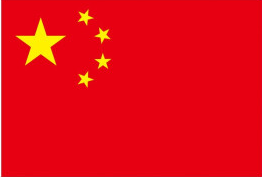
06
2025
-
05
2024 Gold brik Energy storage Forum | YUNT Explores Grid-Forming Applications for C&I Energy Storage, Co-Creating a High-Quality Energy Future
Author:
November 5-6, 2024 – The 2024 China International Commercial & Industrial Energy Storage Conference (Gold brik Energy storage Forum), themed "Focusing on High Quality to Lead New Development", was grandly held at the Shenzhen Convention & Exhibition Center. Jointly organized by China Wind-Solar-Storage-Grid Network, China Charging Pile Network, and the Energy Storage-Charging-Battery Swap Industry Alliance, the forum integrated a "Main Forum + 4 Sub-Forums + New Product Launches + Brand Awards" format, delivering an intellectual summit for the industry to explore future energy trends and share innovations in charging and battery-swap technologies.
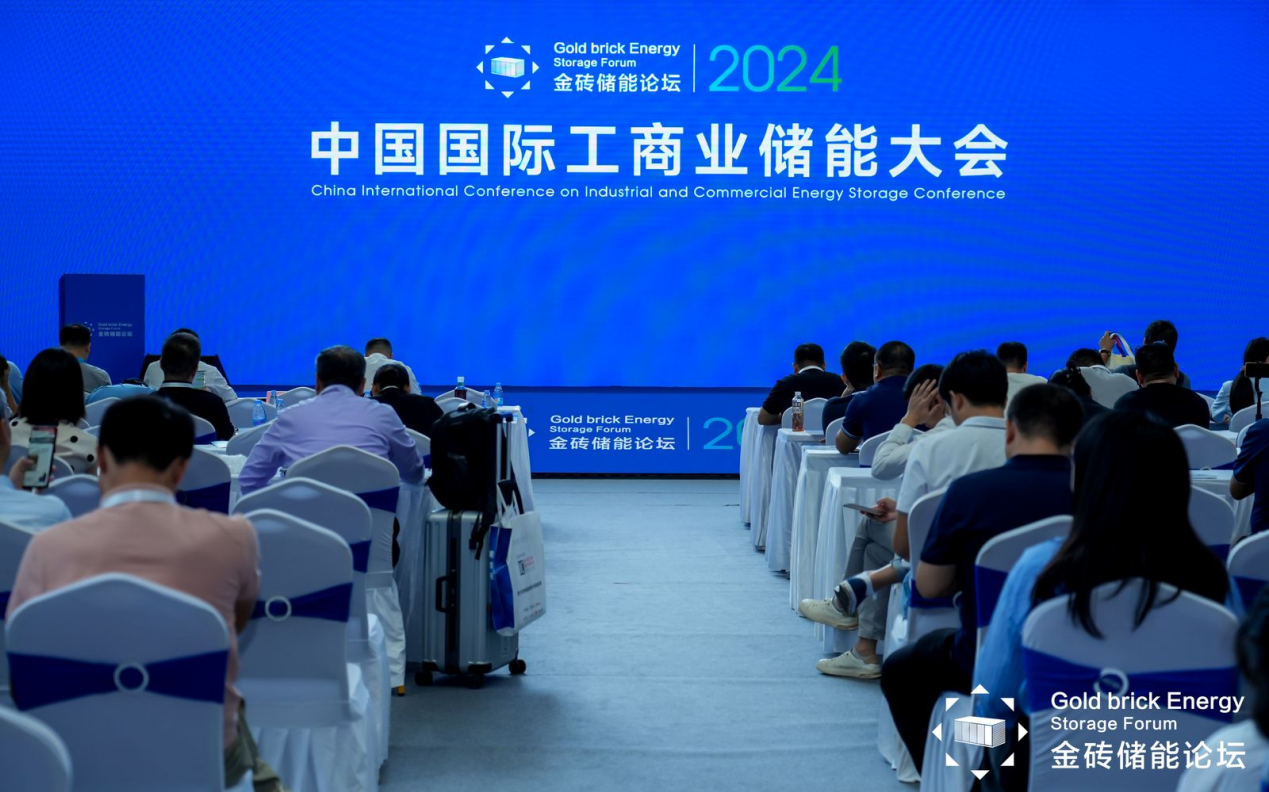
SHENZHEN YUNT DIGITAL POWER CO.,LTD. Yuan Yuan delivered a keynote speech titled "Exploring Grid-Forming Applications in Commercial & Industrial Energy Storage".
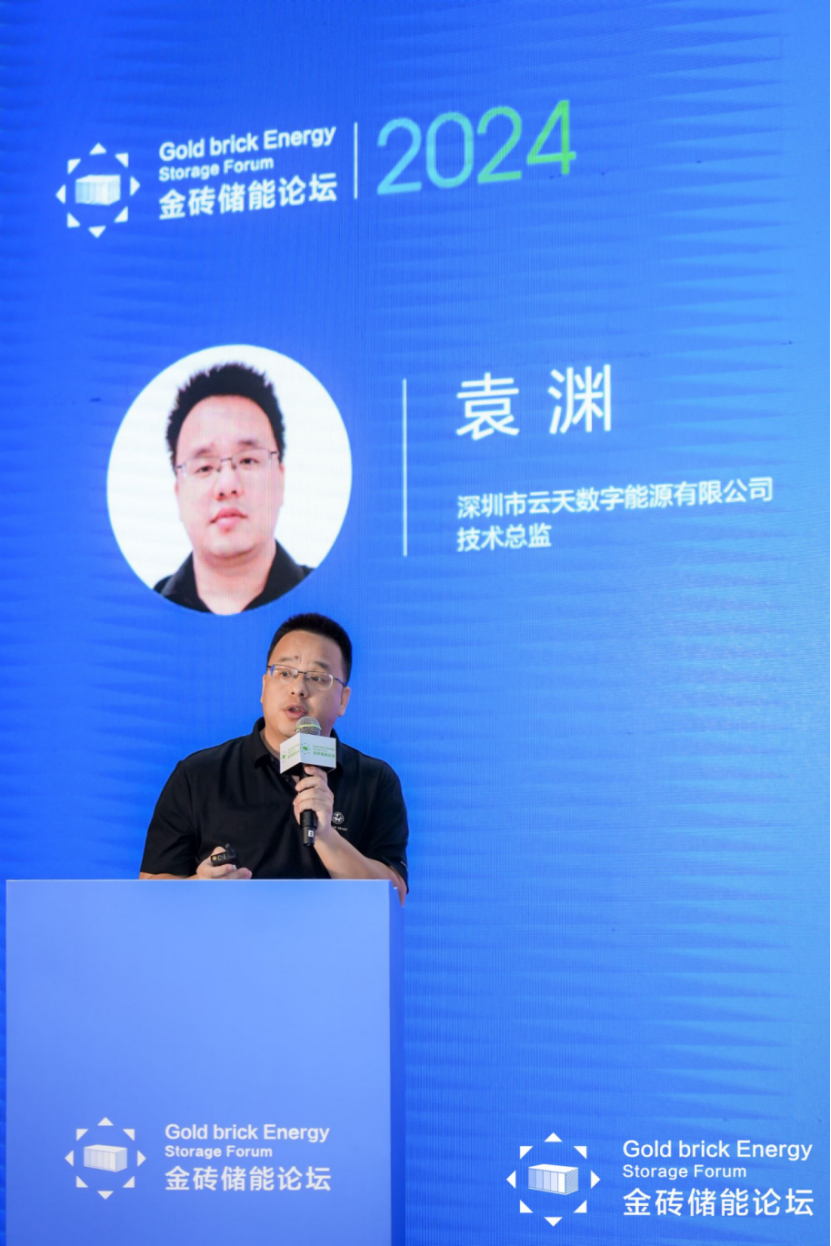
SHENZHEN YUNT DIGITAL POWER CO.,LTD
Yuan Yuan, Technical Director
The theme report shared by YUNT is *Exploration of Grid-forming Applications for Commercial and Industrial Energy Storage*. The reason for using the term "exploration" is that grid-forming is a concept proposed under the new power system, and its application in the commercial and industrial sectors is still in the exploratory stage. Below are some of the explorations and achievements made by YUNT in the grid-forming applications for commercial and industrial use.
(1) Research Significance of Grid-forming Technology
Under the new power system, the proportion of new energy is increasing, and the resulting problems are becoming more and more apparent. New energy power generation is characterized by intermittency, volatility, nonlinearity, and uncertainty. These characteristics lead to a significant imbalance between power generation and consumption, making it difficult to regulate the power grid. New energy power generation is highly correlated with daily cycles and exhibits distinct spatial-temporal distribution patterns. With the "West-to-East Power Transmission" project, the geographical distribution of power generation and land use is uneven, resulting in long transmission lines and a fragile grid structure. Grid connection technologies for wind and solar power generation are asynchronous in nature. They lack the inherent angle stability capability of synchronous machines and cannot effectively provide grid inertia. In a "high-penetration renewable energy and high proportion of power electronics" system, due to insufficient system inertia, the power grid's ability to resist power generation and consumption imbalances deteriorates, increasing the probability of frequency collapse during grid failures.
Current Solutions: The "energy storage + synchronous condenser" approach is commonly adopted. Energy storage mainly performs active power regulation, used for frequency and peak load regulation, while synchronous condensers primarily support voltage stability. However, this solution involves high equipment costs and complex maintenance.
Under the existing new power system, a new solution is to adopt novel grid-forming technologies. Using converters as the carrier and grid-forming control as the core, these technologies construct synchronous power sources, providing inertia and voltage support. Converters can include power electronic conversion devices such as photovoltaic inverters, wind turbine converters, static var generators (SVG), and power conversion systems (PCS).
Grid-forming control adjusts the active and reactive power output by changing the phase and amplitude of the converter's output voltage, thereby providing frequency and voltage support to the system. It simulates the characteristics of a synchronous generator's voltage source, maintaining a constant internal electromotive force during instantaneous responses. Grid-forming control achieves synchronization through power synchronization strategies and does not rely on external grid phase information, enabling it to operate in both islanded and grid-connected modes.
In the new power system, grid-forming technology is mainly applied in weak grids, and its key functions include: (1) Supporting grid voltage by exhibiting voltage source characteristics and actively providing grid electromotive force; (2) Supporting grid inertia, ensuring angle stability, and autonomously providing grid inertia; (3) Fault ride-through capability, allowing continuous grid connection during grid faults; (4) Controllable damping capability, which can smooth the output of new energy sources and avoid vibrations.
In commercial and industrial application scenarios, off-grid power supply by energy storage systems, power supply by diesel generators, and distribution transformer area microgrid applications can all be regarded as "weak grid" scenarios. Therefore, grid-forming technology has significant potential for application and development in these scenarios.
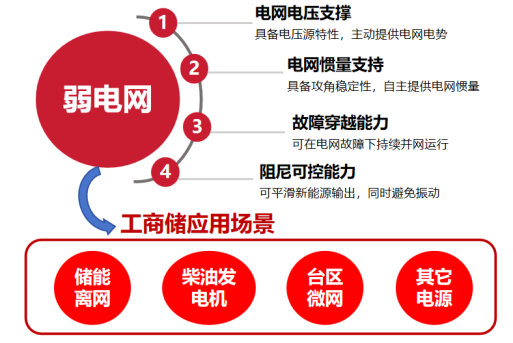
(2) Application of Grid-forming Technology in Commercial and Industrial Energy Storage
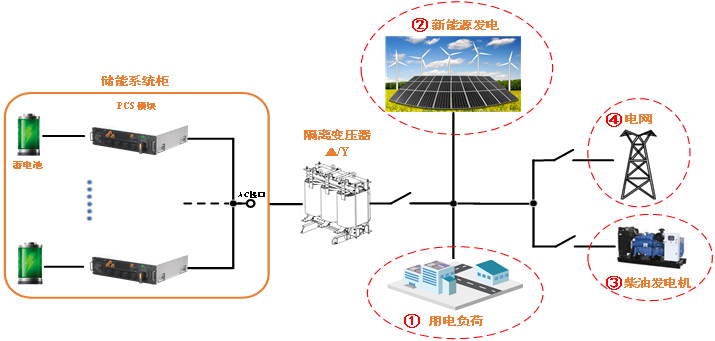
① Electrical Loads: Various types of electrical equipment, such as rectifying loads and motor loads.
② New Energy Power Generation Equipment: Equipment like wind turbines and photovoltaic panels exhibit different characteristics.
③ Diesel Generators: Their characteristics vary depending on manufacturers and capacities.
④ Power Grid: It can be in different states of strength, with varying harmonic contents.
With the continuous development of commercial and industrial energy storage, the number of large industrial users is increasing, and the demand for grid - forming in commercial and industrial energy storage has emerged. Grid - forming technology can assist large industrial users in their low - carbon transformation. By leveraging grid - forming technology, YUNT enables commercial and industrial energy storage not only to adapt to and improve the power grid but also to have the capabilities of black start and off - grid power supply. Through flexible multi - machine parallel strategies, flexible capacity expansion is achieved, and distributed applications are supported. YUNTs PCS modules can achieve megawatt - level capacity expansion, effectively meeting the dynamic capacity increase and off - grid power supply requirements of large industrial users.
YUNT has carried out many successful applications of grid - forming technology in the parallel operation of diesel generators and energy storage systems. It supports the parallel operation of single or multiple PCS units, which can be connected in parallel with diesel generators to supply power to loads. Energy storage can not only increase the capacity of diesel generators but also support their frequency and voltage, providing a stable power supply voltage for loads.
Distribution Transformer Area Microgrids, which are regional isolated power grids constructed based on the "source - grid - load - storage" concept, have complete power generation, transmission, distribution, and consumption links. They possess the characteristics of islanded operation and can independently supply power to large industrial production loads. In the case of "large machines with small grids", industrial loads have high requirements for production processes and power quality, while the safety and stability margin of the power system is low. The gradually increasing installed capacity of new energy squeezes the capacity of synchronous power sources. The intermittency and volatility of new energy output, as well as the vulnerability of components, make the safety and stability issues of enterprise microgrids more prominent, and it becomes more difficult to balance power generation and consumption. This also puts forward higher requirements for the control strategies of distribution transformer area microgrids:
The energy routing cabinet independently developed by YUNT provides an integrated microgrid system solution. The energy routing cabinet offers a wide range of AC and DC interfaces. The AC terminal can be connected to devices such as loads, the power grid, diesel generators, charging piles, and new energy power generation equipment. The DC terminal can be connected to photovoltaic panels, batteries, charging devices, etc. Integrated with the ES (Energy Storage) function, the energy routing cabinet features efficient energy management strategies, flexible parallel capacity expansion, supports the integration of diesel generators and energy storage, has strong adaptability to the power grid, and excellent load - carrying capacity.

Shenzhen Yunt Digital Power Co., Ltd. is a high - tech R & D enterprise. Relying on core power electronics technologies and based on energy storage power conversion, it expands its business towards power electronics applications in energy conversion, power quality management, and electric drive. The company provides customers with core power conversion and energy management products and solutions, helping to create more efficient, reliable, and intelligent digital energy products. The average core R & D personnel have 10 - 15 years or more of experience in power electronics product development.
The company is innovation - oriented, keeps a close eye on the development trends of the upstream and downstream industries, and attaches great importance to continuous product innovation. Its products on the market, under development, and in the pre - research stage always stay ahead of the industry and customer expectations. By leveraging its technical advantages, Yuntian Shinen continuously focuses on the commercial and industrial energy storage industry, striving to address industry pain points. Its products not only meet the requirements of "grid adaptability, load adaptability, and environmental adaptability" but also closely align with customer needs, providing full - scenario solutions.
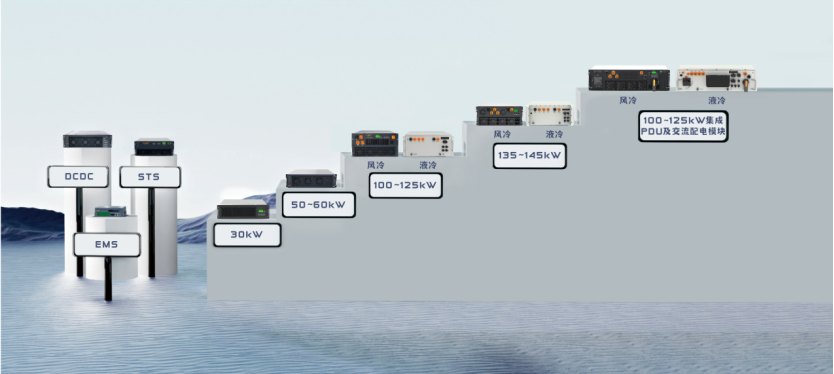
undefined

